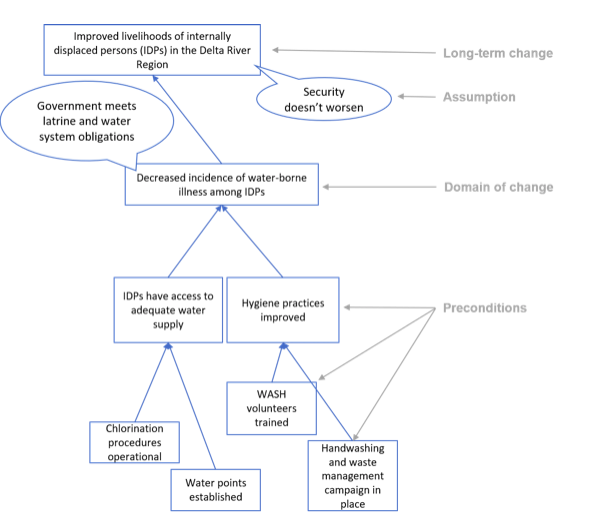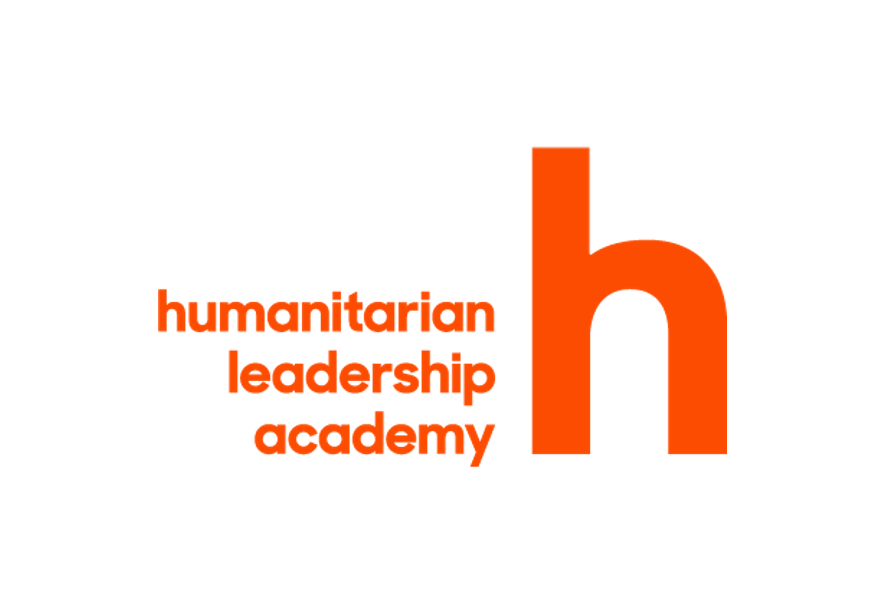Theory of Change
I want to model how change is expected to happen...
What is it?
A theory of change is a logic model. It presents a comprehensive, visual description of how and why a potential change is expected to happen. It is one of three logic models that are recommended as part of quality project design. The theory of change is the most strategic of these three: the “high-level map” of the changes you hope to see.
A theory of change logic has the following components:
Long-term change
Long-term change, which states the desired lasting impact that the intervention aims to support.
Preconditions statements
Preconditions statements, which are the intermediate changes that must occur to reach the long-term change. Preconditions statements can be grouped into domains of change, which are broad strategic areas of intervention that directly contribute to achieving the long-term change.
Pathways of change
Pathways of change, which map the connections between the preconditions. Most initiatives have multiple pathways contributing to the long-term change.
Assumptions statements
Assumptions statements, which identify the risks that could impact project implementation.
Assumptions
Assumptions are a particularly important component of a theory of change. Assumptions identify the locally specific risks and conditions that are present in your project’s context. While teams might have an idealized model for how change will occur, in reality there are all sorts of risks that can interrupt the change logic. Assumptions attempt to manage these risks by identifying what conditions must hold true for change to occur.
- If your assumptions hold true, your desired changes are more likely to occur. If they do not, your project will face challenges.
Here is an example of a partially built-out theory of change for an intervention that aims to improve livelihoods of internally displaced persons in the Delta River Region. The example includes a statement of the desired long-term change, one domain of change, multiple preconditions, and two assumptions.

How do I use it?
A theory of change is used by project teams and other stakeholders to:
- Visualize the change process
- Identify the interventions that will be managed by the project (and which will be managed by other actors)
- Anticipate and navigate potential challenges, by making sure that any assumptions are clearly identified and articulated.
Theories of change are often used within project proposals to help the potential donor understand the needs that should be addressed and which, specifically, will be managed by the applicant.
Finally, specific theory of change components inform the development of the next two logic models, the results framework and the logframe.
When do I use it?
A theory of change is developed during the project design phase. However, best practice suggests they should be treated as “living” documents. That means that the theory of change should be updated as the project context evolves and as the team learns about what works and what doesn’t work in the local context. This is particularly true regarding the theory of change’s assumptions. Assumptions should be monitored and updated throughout project implementation.
Tips:
Tip 1: Use Conceptual Frameworks
A theory of change is developed using the best knowledge and experience available about the need your team aims to address. One approach project teams use to ensure that their theory of change is evidence-based is through the use of conceptual frameworks. These are are tested, evidence-based models for development interventions. For example, USAID uses a food security framework and UNICEF has developed a maternal and child undernutrition framework.
Tip 2: Use Information from Needs Assessments
Theories of change should also be informed by information derived from needs assessments or situation analyses.
Tip 3: Avoid Killer Assumptions
It can be difficult to decide which assumptions to include in your theory of change. Ultimately, you want to identify a few important assumptions that will seriously affect your project’s ability to deliver on its commitments. However, make sure you don’t include any killer assumptions, which are assumptions that you expect will be in place, but in reality are unlikely to be realized and could potentially “kill” the project. If you discover a killer assumption, you will need to revisit your preconditions and the change pathways to see how the long-term change can be achieved despite the killer assumption.
Tip 4: Use Participatory Methods
The best theories of change are designed using participatory methods that incorporate multiple stakeholder perspectives. This provides a complete picture of the situation at hand.
Supported by:
Shared by:
Users are free to copy/redistribute and adapt/transform
for non-commercial purposes.
© 2022 All rights reserved.




